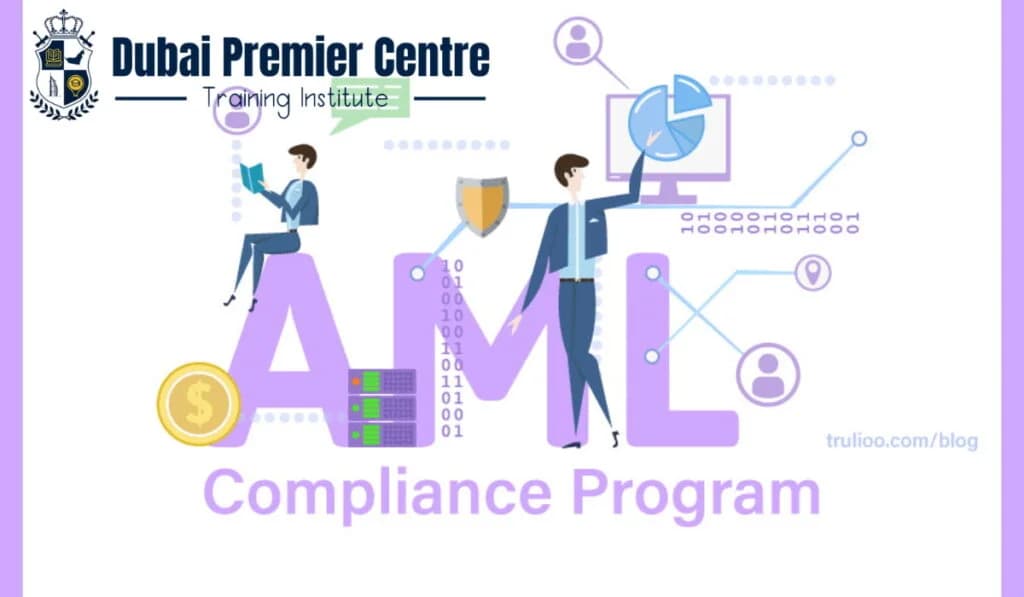The Future of Financial Crime Compliance: Predictions for 2025 and Trends

As we advance into 2025, the landscape of financial crime compliance is set to undergo significant transformations driven by technological advancements, regulatory changes, and evolving criminal tactics. This article explores the anticipated trends, challenges, and innovations in Anti-Money Laundering (AML) and financial crime compliance, providing insights into what institutions can expect in the near future.
AML Trends & Technology: Navigating the Future of AML in 2025
The integration of technology into AML practices is rapidly evolving. By 2025, institutions will increasingly rely on Artificial Intelligence (AI) and Machine Learning (ML) to enhance their compliance frameworks. According to recent predictions, the use of AI in AML activities is expected to rise from 62% in 2023 to 90% by 2025. This shift will enable financial institutions to detect complex patterns in transactions, improving the efficiency and accuracy of identifying suspicious activities.
Key Technological Innovations
- Real-Time Monitoring:
The demand for real-time transaction monitoring will become standard as transactions grow faster and more complex. AI-powered systems will analyze transactions instantaneously, allowing for immediate identification of suspicious activities.
- Advanced Screening Techniques:
AI algorithms will enhance sanctions screening and Politically Exposed Persons (PEP) monitoring processes, reducing false positives and improving accuracy in identifying potential risks.
- Integration with Digital Assets:
As cryptocurrencies gain traction, AML solutions will need to adapt to the unique characteristics of digital transactions. Institutions will implement blockchain analytics to trace cryptocurrency movements and identify illicit activities.
New Regulations: A Global Shift Towards Risk-Based Approaches
The regulatory landscape for AML is evolving towards more risk-based approaches. By 2025, regulators worldwide are expected to refine their strategies to better assess and manage AML risks. This shift includes:
- Localized Risk Assessments:
Countries will leverage data analytics and AI for more granular risk assessments tailored to their specific needs.
- Adaptive Compliance Models:
Regulations will evolve to accommodate flexible compliance models that can respond swiftly to financial innovations.
Predicate Crimes: The Need for Effective Detection
As financial crime grows more sophisticated, understanding predicate crimes—those that generate proceeds for money laundering—becomes crucial. Effective detection mechanisms must be established to address these underlying offenses comprehensively. Institutions are expected to enhance their capabilities in identifying not just money laundering but also associated predicate crimes such as fraud and human trafficking.
Biggest Challenges Faced by Compliance in 2025
Regulatory environments are becoming increasingly stringent. New frameworks, such as the EU AI Act and the Digital Operational Resilience Act (DORA), are setting high standards for compliance. The EU AI Act mandates transparency and accountability in AI systems, while DORA emphasizes robust data management and cybersecurity measures. Financial institutions must adapt by implementing comprehensive data capture and archiving mechanisms to meet these requirements, demanding a proactive risk-based approach to operational and systemic risks .
- Increased Regulatory Pressure
Regulatory pressure is expected to remain intense, especially in the UK and EU markets. As institutions navigate these pressures, they must focus on maintaining financial stability while addressing consumer protection and emerging risks from geopolitical tensions and technological innovations. The implementation of Basel III reforms will further complicate compliance efforts as firms strive to meet new capital requirements .
- Diverging Regulations
As countries adopt different regulatory approaches—especially concerning Environmental, Social, and Governance (ESG) criteria—global businesses will face challenges in maintaining compliance across multiple jurisdictions. This divergence can lead to increased complexity in compliance efforts, requiring teams to be adaptable and well-versed in varying regulatory landscapes .
- Financial Crime and Fraud
The landscape of financial crime continues to evolve, with increased risks from fraud, money laundering, and cybercrime. Compliance teams will need to enhance their capabilities in detecting not just money laundering but also associated predicate crimes such as fraud and human trafficking. The establishment of the new pan-European Anti-Money Laundering Authority (AMLA) will add another layer of oversight that institutions must navigate.
- Cybersecurity Risks
With the rise of digital banking and online transactions, cybersecurity threats are a significant concern for compliance teams. Organizations must prioritize data privacy and security measures to protect sensitive information from breaches or cyberattacks. Compliance with regulations related to data protection will be critical as firms implement new technologies.
- Workplace Tension and Polarization
Increased polarization within workplaces can affect compliance culture. As organizations strive for diversity and inclusion, they must also manage workplace tensions that may arise from differing opinions on social issues. This tension can impact team dynamics and hinder effective communication within compliance departments .
- Ethics and Culture
Building a strong ethical culture remains a challenge for many organizations. Compliance teams must work diligently to foster an environment where ethical behavior is prioritized, which includes ongoing training and awareness programs that emphasize the importance of compliance and integrity .
- Modern Slavery and Forced Labor
Organizations are increasingly held accountable for ensuring that their supply chains are free from modern slavery and forced labor practices. Compliance teams will need to develop robust due diligence processes to identify risks within their supply chains while adhering to relevant regulations.
- Third-Party Risk Management
The complexity of managing third-party relationships is heightened by new regulations such as DORA, which requires firms to assess the risks associated with critical third parties. Compliance teams must implement rigorous due diligence processes to ensure that third-party vendors comply with applicable regulations
- Generative AI: A Technological Arms Race
Generative AI is emerging as a pivotal tool in the fight against financial crime. Its capabilities extend beyond traditional AI applications by enabling institutions to simulate various scenarios and predict potential risks before they materialize. This proactive approach allows compliance teams to stay ahead of emerging threats while enhancing their overall effectiveness.
- Climate Change & ESG Considerations
Environmental, Social, and Governance (ESG) factors are increasingly influencing financial crime compliance strategies. Institutions are expected to integrate climate change considerations into their risk assessments, recognizing that environmental degradation can facilitate financial crimes such as fraud related to carbon credits or greenwashing practices.
- Geopolitical Tension and Financial Crime
Geopolitical tensions have far-reaching implications for financial crime compliance. As countries impose sanctions or engage in economic warfare, compliance teams must remain vigilant against new threats that arise from these dynamics. Understanding the geopolitical landscape will be essential for effective risk management.
Emerging Trends in Financial Crime Risk Assessments
As we look toward 2025, several emerging trends are likely to shape financial crime risk assessments:
- Increased Integration of Artificial Intelligence and Machine Learning
The role of Artificial Intelligence (AI) and Machine Learning (ML) in financial crime risk assessments is expected to expand dramatically. By 2025, organizations will increasingly rely on these technologies to automate and enhance their risk assessment processes. Key developments include:
- Predictive Analytics: AI models will enable institutions to identify emerging risks before they materialize, allowing for proactive risk mitigation strategies.
- Dynamic Risk Scoring: Machine learning algorithms will continuously update risk profiles based on real-time data, ensuring that assessments reflect the most current threat landscape.
- Behavioral Analysis: Advanced AI techniques will detect subtle behavioral anomalies that may indicate potential financial crimes, improving the accuracy of risk assessments.
- Proliferation of Digital Assets and Decentralized Finance (DeFi)
The rise of cryptocurrencies and DeFi platforms presents new challenges for financial crime risk assessments. As these technologies become more prevalent, organizations will need to adapt their frameworks accordingly:
- Increased Regulation: Stricter regulations for virtual asset service providers (VASPs) and DeFi platforms are anticipated, requiring enhanced compliance measures.
- Blockchain Analytics: Advanced tools will be crucial for tracing digital asset transactions, helping to combat money laundering and sanctions evasion.
- DeFi-Specific Risk Assessments: Organizations will develop specialized frameworks tailored to assess risks associated with decentralized ecosystems.
- Enhanced Risk-Based Approaches
The global AML framework is shifting towards more refined risk-based approaches. By 2025, regulatory bodies are expected to emphasize:
- Localized Risk Assessments: Countries will increasingly utilize data analytics and AI for more granular risk assessments tailored to local conditions.
- Adaptive Compliance Models: Regulations will evolve to allow more flexible compliance models that can swiftly respond to rapid financial innovations.
- Real-Time Transaction Monitoring
As financial transactions become faster and more complex, the demand for real-time transaction monitoring will continue to grow. By 2025:
- Financial institutions will rely heavily on AI-powered systems capable of analyzing transactions instantaneously, identifying suspicious activities as they occur.
- These systems will need to process large volumes of data across various financial channels, enhancing the ability to prevent money laundering and terrorism financing.
- Advanced Screening Techniques
The methodologies used for sanctions screening and Politically Exposed Persons (PEP) monitoring will also evolve significantly:
- AI and machine learning will enhance screening processes by ensuring that sanctions lists are continuously updated and accurately checked against customer profiles.
- Natural Language Processing (NLP) algorithms will improve matching accuracy by identifying potential aliases and name variations across different languages, reducing false positives.
- Integration of Environmental, Social, and Governance (ESG) Factors
- The integration of ESG considerations into financial crime risk assessments is becoming increasingly important. Organizations are expected to incorporate environmental and social factors into their frameworks, recognizing their potential impact on financial crime risks. This trend reflects a broader commitment to responsible business practices and sustainability
What Will Be the Focus for Risk and Compliance Teams in 2025?
In 2025, risk and compliance teams will likely concentrate on:
- Enhancing collaboration across departments to ensure a unified approach to financial crime prevention.
- Investing in training programs focused on emerging technologies such as AI and blockchain.
- Developing comprehensive frameworks that address both traditional financial crimes and newer threats posed by digital assets.
Want to learn more about the future of financial crime compliance
For professionals looking to stay ahead in this rapidly changing environment, consider enrolling in our comprehensive training program at Dubai Premier Centre (DPC) Our course on "Course in Anti-Money Laundering and Counter-Terrorism Financing (AML/CTF)" is designed to equip you with the knowledge and tools needed for effective AML practices in 2025.visit Dubai Premier Centre to learn more.
FAQ about the future of financial crime compliance
- What is the trend in AML in 2025?
The trend towards increased use of AI and machine learning technologies for real-time monitoring and predictive analytics is expected to dominate AML practices by 2025.
- What is the future of AML compliance?
AML compliance is shifting towards more adaptive, risk-based approaches that leverage advanced technology for efficient detection and prevention of financial crimes.
- What is AML CFT compliance?
AML CFT compliance refers to Anti-Money Laundering (AML) measures combined with Counter Financing of Terrorism (CFT) strategies aimed at preventing illicit financial activities.
- What is the role of an AML CTF compliance officer?
An AML CTF compliance officer is responsible for ensuring that an organization adheres to all relevant laws and regulations regarding money laundering and terrorist financing, implementing policies, conducting training, and overseeing reporting obligations.
Read Related Articles




